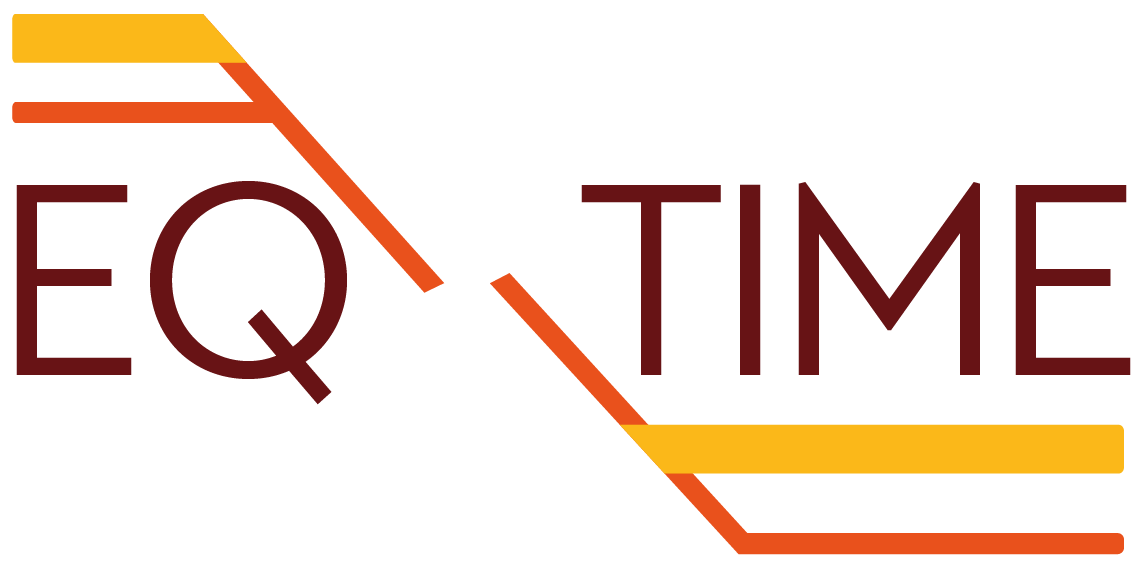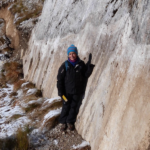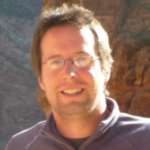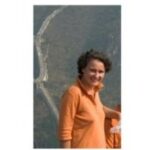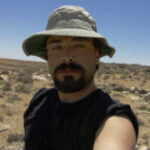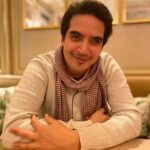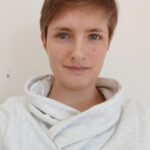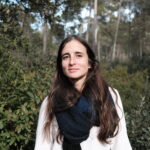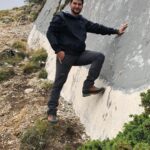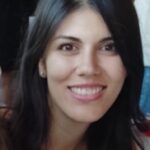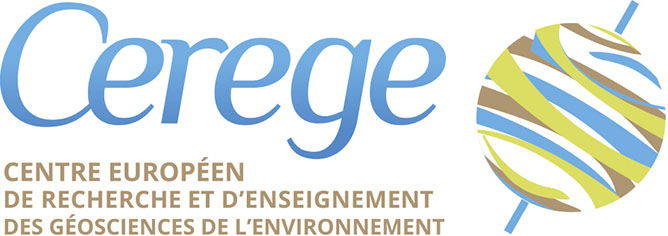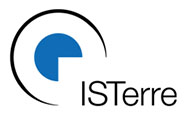OUR TEAM
Lucilla Benedetti
Project coodinator (CEREGE)
My research aims at understanding the link between plate tectonics, earthquake occurrence and landscape building, particularly in the Mediterranean. I have developed innovative dating methods to constrain the chronology of earthquakes over long time periods (≈ 20,000 years) and specialize in the development of Chlorine-36 to constrain the chronology of surface processes and continental deformation. I also develop approaches based on morphotectonic observations and quantitative morphology to quantify the displacement of Quaternary markers by active faults. I will be involved in WPs 1 and 2 and will ensure the management of the project with partners leaders and WPs leaders.
Vincent Godard
Steering commitee (CEREGE)
My main area of interest is the dynamics of the Earth surface, which is a complex interface between internal and external geodynamics. Tectonic and climatic processes interact constantly to shape the evolution of topography, by driving erosion processes and transporting sediments. The general approach I implement in my exploration of Earth Surface Processes is to combine time constraints on these processes using mostly cosmogenic nuclides such as 10Be (integrating rates of surface denudation over the 1-100 ka timescale) with information about the spatial structure of the landscape using high resolution Digital Elevation Models. I also try to integrate these two types of data into a physical understanding of landscape dynamics using numerical Landscape Evolution Models.
Erwan Pathier
Steering commitee (ISTerre)
My research interests focus on the earthquake cycle and its relationship with the continental deformation by measuring and analyzing the different aspects of the earthquake cycle : interseismic phase and its associated transient deformations such as slow earthquakes, coseismic and post-seismic phases.
I’m also working on methods for measuring ground deformation from remote sensing techniques with a special interest for space-borne radar imagery and especially radar interferometry techniques.
Oona Scotti
Steering commitee (IRSN)
My reserach interests in the past decade have focused mainly on the developement of approaches to estimate the seismic potential of fault sources based on geologic/geodetic data and physics-based models. My main objective in this project is to set up a link between the different communities presently working in the Central Apennines in order to compare approaches in fault-based Probabilistic Seismic Hazard Assessment constrained by geologic/geodetic data (See WP1 and 2) and physics-based modelling results (WP3 - see Hugo Sanchez-Reyes Post Doc).
Simon Daout
Initially post-doctorate within the project at ISTerre, Simon Daout is now maitre de conférence at Université de Lorraine.
An important part of my research consists of developing synthetic aperture radar (InSAR) methodologies to measure slow surface displacements (few mm/yr) associated with various processes (active tectonics, surface processes, permafrost, etc...). Another research interest is to reconcile long-term (geological or tectonic) and short-term (geodetic) tectonic models. I am particularly interested in the link between active fault behavior and fault geometry.
Concerning the EQTIME project in particular, I am working on the large-scale processing and interpretation of InSAR data over the Apennines with colleagues from Isterre.
The objectives are 1) to produce large-scale InSAR velocity fields to identify active faults, which load inter-seismic strain or creep at shallow depths 2) to de-convoluate the various sources in the InSAR velocity field: tectonic mantle dynamic, hydrology (WP2, Task 2.2).
Magali Riesner
Post-doctorante within the project
My research aims at understanding the relationship between long-term crustal deformation and active tectonic processes. I am particularly interested by the link between inherited geological structures, the spatio-temporal variability of seismic ruptures and its contribution to seismic hazard assessment. I am using my background in structural geology and paleoseismology to study short-term processes, at the scale of earthquakes, or or several seismic cycles through geomorphological response of landscapes to active tectonics. Within the EQTime project, I al involved in WP 1 and 2. My main focusses are (1) quantifying the long-term deformation on the major active normal fault in the Apennins since the onset of the extension, (2) build a 3D structural model of the Apennines and (3) quantify the quaternary cumulative deformation of the main faults.
Hugo Sanchez Reyes
Post-doctorante within the project
I currently work at the IRSN/BERSSIN as part of the ANR EQTime. I closely work with PhD. Oona Scotti (IRSN), PhD. Sebastien Hok (IRSN) and PhD. Alice-Agnes Gabriel (LMU) on the problem of physics-based dynamic earthquake rupture simulations. Our goal is to better understand and estimate if a considerably large earthquake is probable to occur on complex fault systems where multiple segments could be activated during an important event (WP3).
Maureen Llinares
PhD student within the project
I'm phD student working with Lucilla Benedetti since october 2021. My objective is to reconstruct the seismic history of the fault system through cosmogenic dating.
Léa Pousse-Beltran
Post-doctorate associated
My main interest is to detect and understand spatial and temporal variation of fault behavior. Concerning the EQTIME project in particular, I was involved in the detection of afterslip after the 2016 seismic sequence using INSAR (Pousse-Beltran et al., 2020). I am also involved in the quantification of the slip rate on the major active normal fault in the Apennines (Mt Vettore fault) (Pousse-Beltran et al., in review).
Clément Desormeaux
PhD student associated
I am a third year PhD student at Aix-Marseille University. My work is about the contribution of tectonic and climatic extreme events on long-term landscape building. In the EQ-Time ANR project, I am working on the Magnola-Velino fault system in the Central Apennines and I am interested in the relationship between the rate at which slip accumulates on a fault scarp and the long-term evolution of triangular facets. I use quantitative datasets on normal fault slip rates at various timescales and rates of erosion of the facets and the gullies (36Cl Cosmogenic Nuclides).
Alessio Testa
PhD student associated
I'm a Pdh Student at University of Chieti (Italy) and I'm working on fault displacement hazard analysis.
I'm using Palaeoseismology and Cosmogenic nuclides to constrain the activity of Normal faults in the Northern Apennines.
Irene Puliti
PhD student associated
I currently am a post-doctorate at Chieti University former Ph.D. student associated. My main area of research is on determining temporal and spatial fault system evolution of active normal fault in Central Apennines. My research objectives are: 1) Quantifying fault displacements at different time scales through paleoseismological, morphotectonic, and structural geology approaches. 2) Constraining slip rates through Cosmogenic Nuclides dating on active normal faults. 3) Investigate segmentation patterns of active faults and their relation with inherited structures.
Laboratory
CEREGE
The group comprises international expertise in the quantification of tectonic and surface processes, paleoseismology, quantitative geomorphology and Quaternary geochronology. Notably, CEREGE hosts the LN2C cosmogenic nuclides national laboratory and French AMS facility ASTER, that will carry out 36Cl measurements and provide the essential geochronological framework for our investigations over the 103 -105 time frame. CEREGE also includes a state-of-the-art geomatic laboratory (SIGEO) with skills and equipment for a variety of field acquisitions (various drones and sensors with a licensed pilot), advanced remote sensing and photogrammetric processing, 2D-3D geological reconstructions and visualizations.
Géosciences Montpellier
The group comprises international experts with complementary skills in geomorphology, paleoseismology, near surface geophysics, geodesy and PSHA. They cover the whole fault-to-SHA approach from remote sensing to field data collection, processing and modelling to integrate near-surface structural data, deformation envelopes and fault interactions into SHA models. GM provide hardware and software resources to this project from its remote sensing lab and geophysical equipment (ERT, H/V, ambient noise seismics, GPS).
ISTerre
The group of researchers involved in the project include specialist using geodesy (GNSS, aerial and satellite imagery) for studying interseismic deformation and seismic cycle. They have developed dedicated InSAR processing software (NSBAS) for measuring small deformation signals. They are also experts in fault slip inversions and modeling of geodetic data and PSHA.
Other people involved : Anne Socquet, James Hollingsworth, Céline Beauval, Mathilde Radiguet.
Other people involved : Anne Socquet, James Hollingsworth, Céline Beauval, Mathilde Radiguet.
IRSN
The group involves experts in fault-based seismic hazard modeling, probabilistic Seismic Hazard Assessment (PSHA), and mechanics of earthquake ruptures and numerical models, as well as experts in active faults mapping, paleoseismology, fault monitoring, and gravitational effects on landscapes.
